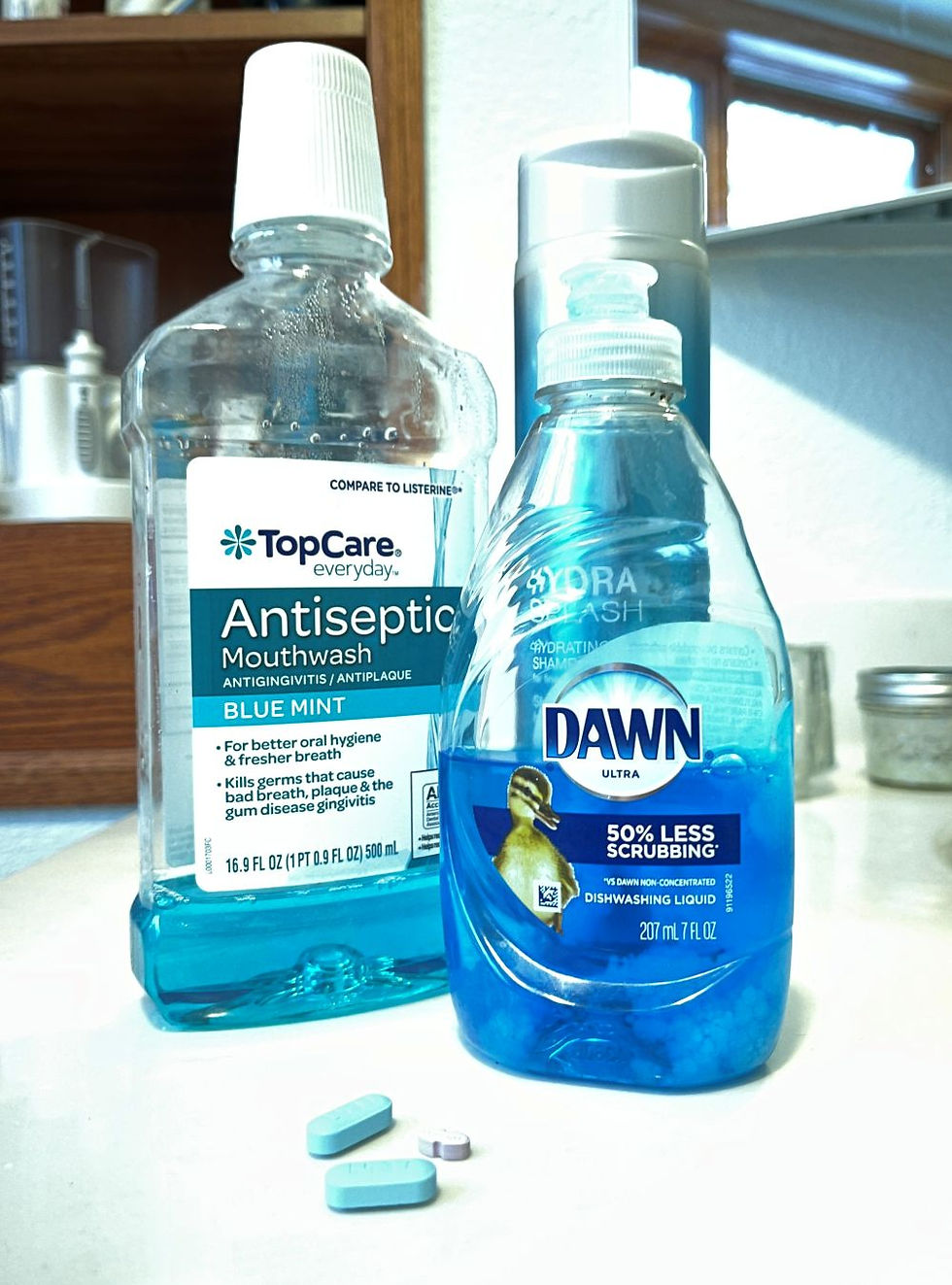Rs for Resilient Living: Refuse
- Jenny Hill
- Jun 11, 2024
- 4 min read

It is not news that we consume a horrific amount of plastic. As author Susan Freinkel (Plastic: A Toxic Love Story) famously shows on her website, in “the time it takes you to read this sentence” more than 60,000 plastic bags have been consumed worldwide.
So that’s why in this next installment in the Rs for Resilient Living blog series, we are talking about “Refuse.” Not accepting or buying plastic seems to be the best defense against the tide of plastic that washes into our lives.
Low (and Getting Lower) Percentage of Plastic Recycled
And speaking of the tide, let’s pause a moment to check numbers on plastic recycling. Did you know that only 9% of plastic was recycled in 2018? That’s 3 million tons of plastic out of the 30 million tons produced that year. In this data is from the Environmental Protection Agency, 2018 is the most recent year for which statistics are available.
Environmental groups such as Beyond Plastics are calling on the EPA to release more current numbers and meanwhile have released their own report that calculates the recycling rate of plastics as less than 6%...so the recycling rate is actually dropping.
Depending on where you live, this may not surprise you–recycling options for plastic are limited or not readily available, especially in rural areas..
Even if recycling options improve (and we certainly hope they do!) plastics degrade each time they’re processed “unlike glass and aluminum which are infinitely recyclable” according to this article from Green American.
Origin of Plastic Free July
So welcome to Plastic Free July, brought to you by the Plastic Free Foundation, an international nonprofit which has spearheaded the event since 2011. Based in Australia, they offer challenges, big and small, as well as inspiration on how to start making a difference. Look for an image of (and link to) their pledge form at the end of this post.
Plastic is useful in many areas of our daily lives. And it is easy to get overwhelmed reading about plastic waste. And it’s so easy to think “one more plastic bag won’t make much of a difference” when you are running behind at the grocery store. Or to think that no big corporation is going to pay attention to what you do.
But the fact is 70% of the gross domestic product (GDP) is consumer spending, so what you purchase and how you purchase it DOES matter. Setting an example for kids, letting your friends and neighbors know it IS possible to choose sustainable products that are just as good (or better) as what we’ve been using.
And that sustainability practices aren’t necessarily inconvenient once we’ve tried them out. One website that’s helped me frame up a personal action plan is Beyond Plastics. Their Join the Reuse Revolution link was especially helpful.
Starting Where I Am
The benefits of REFUSING were brought home to me on a recent visit to a fast food restaurant. If you don’t take an item in the first place, you don’t have the logistics of figuring out how to recycle it or the stress that comes with finding out it’s something that CANNOT be recycled.
As soon as I saw how my milkshake, my treat for the day, was delivered, I knew I had stepped in the plastics hole. It was in a clear plastic container with a clear plastic top. I (too righteously) REFUSED the straw, but then realized I still would need a spoon because how else would I eat it? There were no spoons out with the ketchup, straws etc. I needed to ask at the register. And they handed me one. It was a plastic spoon wrapped in plastic. Really? I thought. But I took it.

It’s easy for me to turn down a straw because I don’t like the idea of receiving my food through plastic. Similarly, I hate the feeling of plastic silverware–both in my hand and in my mouth. I dislike it so much I carry a “real” spoon and fork with me in my backpack WHICH I HAD FORGOTTEN and now I was in the car with my milkshake and both a stainless steel and plastic spoon.
I didn’t go back to the fast food restaurant to see if they would take back the spoon (maybe at that point its plastic wrapper would have been an advantage–a frustrating thought), but I should have.
My plastic spoon fast food debacle coupled with researching what others have done to reduce plastics use has inspired me to take the Plastic Free July challenge. Once I completed the pledge form, I received an introductory email which starts off with their Pesky Plastic Quiz and a 31 Days of Plastic Free Choices calendar.
So although I did it pretty imperfectly with the plastic-wrapped plastic spoon, I will keep trying.
I will be sharing updates on my personal Plastic Free July in the July 15 issues of our eNewsletter (click here if you would like to subscribe to our eNewsletter) and the July 29 post of this blog.







Comments